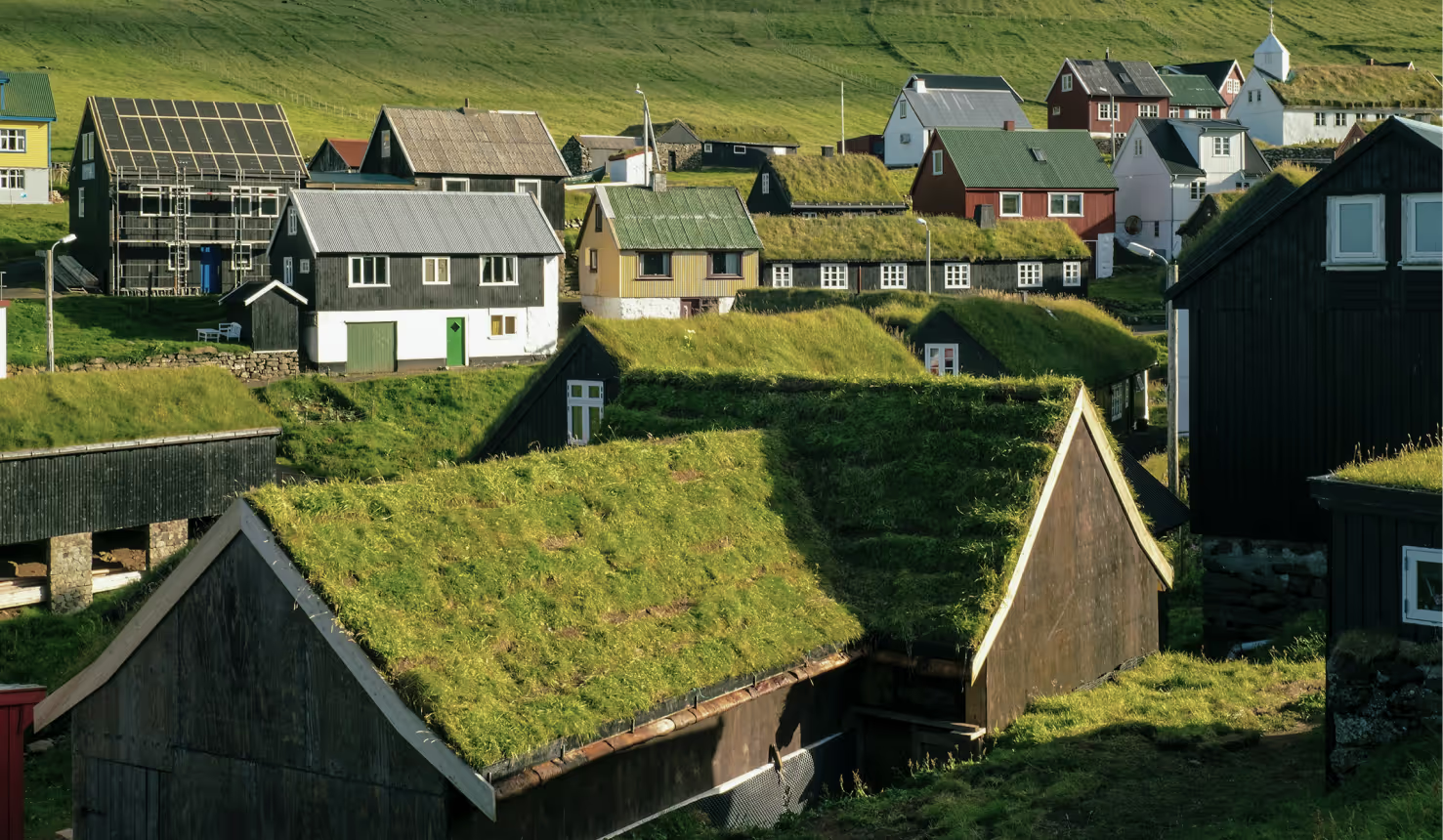6 Types of Green Roofs for Cooling and Biodiversity

Join the community





Green roofs, also known as living roofs or vegetated roofs, have gained popularity in recent years for their numerous environmental and aesthetic benefits. These roofs are designed to support the growth of vegetation, which can vary widely based on the specific type of green roof.
6 Types of Green Roofs
- Biodiverse Green Roofs: These roofs are designed primarily to support local wildlife and promote biodiversity. Biodiverse green roofs often feature native plant species to attract and support pollinators, birds, and insects.
- Solar Green Roofs: Solar green roofs integrate solar panels with vegetation, providing renewable energy generation and green space. They make the most of available rooftop areas, contributing to sustainability efforts.
- Cooling Roofs: Cool roofs incorporate reflective materials and vegetation to reduce heat absorption, mitigating the urban heat island effect and lowering cooling costs. By keeping buildings cooler, they contribute to energy savings and reduce greenhouse gas emissions.
- Modular Green Roofs: These roofs feature pre-planted modules that can be quickly installed on existing structures. Modular green roofs are adaptable and can cover small rooftop sections or large expanses, depending on the desired green space.
- Hydroponic Green Roofs: Hydroponic green roofs use nutrient-rich water solutions to grow plants without soil. They are ideal for urban environments where space is limited and precise control over plant nutrition is desired.
- Blue-Green Roofs: These roofs combine green vegetation with blue components like water storage and retention systems to manage stormwater effectively. Blue-green roofs help reduce runoff and contribute to sustainable urban drainage systems.
Choosing the best green roof for you
Based on your home, your climate, and your budget (of time and money), choose a green roof that suits your needs.
Low-maintenance
These roofs typically feature shallow soil depths (2-6 inches) and are planted with hardy, drought-resistant plants. Due to their minimal soil and plant load, extensive green roofs are suitable for retrofitting existing buildings and are less taxing on the building's structure.
Medium maintenance
These roofs combine some aspects of both extensive and intensive green roofs, with soil depths ranging from 4-6 inches. Semi-intensive green roofs can support a mix of vegetation types, allowing for more diversity compared to extensive roofs while still being relatively low-maintenance.
High-maintenance
These roofs feature deeper soil layers (more than 6 inches) and can support a wide variety of plants, including trees, shrubs, and even small gardens. Intensive green roofs can serve as recreational spaces, gardens, or even urban farms, providing opportunities for diverse vegetation and human interaction.
Each type of green roof offers unique advantages and can be tailored to suit specific environmental, aesthetic, and functional goals. Whether you're interested in reducing energy consumption, supporting local biodiversity, or simply creating an inviting rooftop garden, there's a green roof option to fit your needs.













